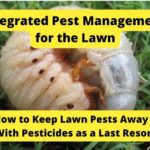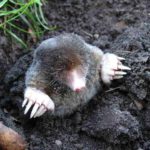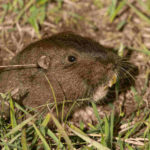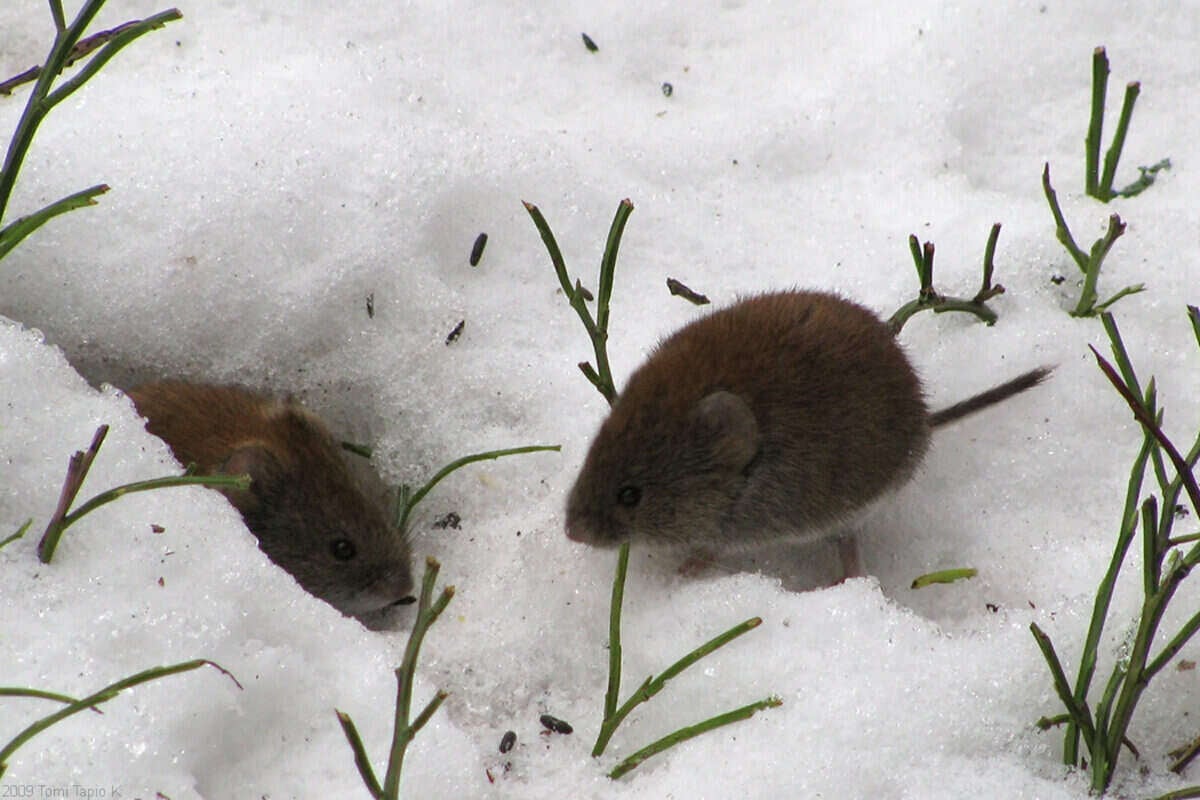
After spring and summer, your lawn is looking great. The soil is healthy, and that thick green turf covers your yard like a carpet. Unfortunately, that beautiful lawn is also a buffet table for small rodents. If voles have taken up residence in your yard, we’ve got the information you need to know on how to get rid of voles and repair your lawn.
You’ll learn about applying vole repellents, setting the right traps, and other tips to keep these critters at bay. Once the voles are gone, your lawn might need some TLC, so we’ll also dive into the best practices for lawn care post-vole invasion, including repairing damage and preventing future infestations.
Signs of Voles in Your Yard
The first step in pest management is to correctly identify the critter. So if you’re wondering, “Are there voles in my yard?” here’s how you can tell:
- Runways: Voles leave unmistakable scars in your yard called runs or surface runways — grassless depressions crisscrossing your yard like little sidewalks leading to and from their burrow openings.
- Gnaw marks: If it’s voles, you’ll see patches of gnaw marks with irregular patterns about 1/16th to 1/8th inches wide. Gnawed stems may have a pointed tip, and the roots or tubers may also show the same wear.
- Damage from pine voles: One species, pine voles, burrows entirely underground. Their damage may not be as easy to spot, but they still have their tells. Spongy ground from their tunnels and trees that seem to be suffering from other problems may be getting girdled underground by pine voles.
- Hawks: Hawks circling overhead can be a clue that you have voles in your yard, says Colorado State.
So, it’s been a few years since you’ve seen the voles, and you think they’ve finally said au revoir to your lawn? Not so fast.
Dana Sanchez, a wildlife specialist with the Oregon State University Extension, notes that vole populations are cyclical, meaning their populations wax and wane. While it is tied to food supplies, no one has been able to crack the code in predicting when the next high population year will be.
So, if you have a few years without much vole activity, don’t get the wrong impression. You’ll probably see them again in the future and probably still need to invest in vole control in your yard.
How to Get Rid of Voles in Your Yard
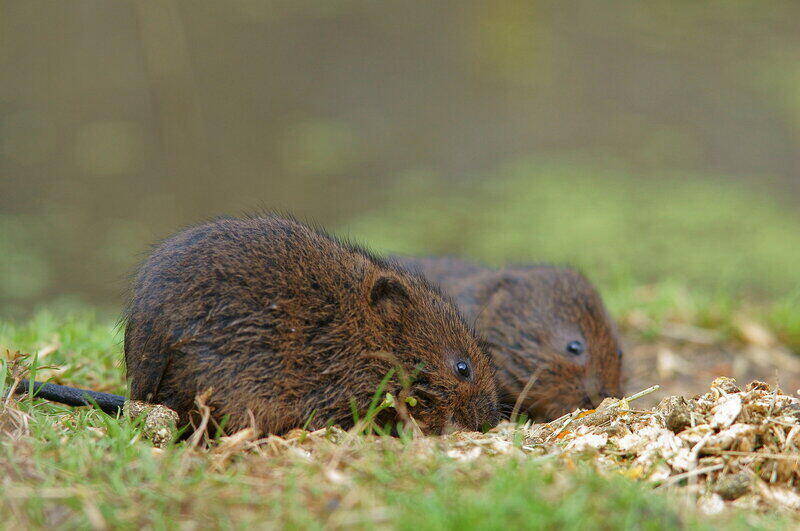
How to Get Rid of a Small Population of Voles
So, you’ve surveyed the damage, and it’s voles. If it’s a small population, you may be able to handle it yourself. If you want to protect your lawn from further damage, it’s time to evict those unwanted squatters. The usual control methods are repellents, trapping, or baiting.
Here’s how to get rid of voles in your lawn:
Apply Vole Repellents
- DIY vole spray repellent: In a spray bottle, mix equal parts water and dish soap (put water in first to keep from bubbling), and add diced hot peppers. Formulations with at least 0.5 percent capsaicin (a substance present in chili peppers) show marginal repellency.
However, concentrations of greater than one percent capsaicin are required to repel some rodents, so a higher concentration may have a higher rate of repellency.
Spray this vole treatment around areas attractive to voles, like your garden, their holes, or any brush piles. Reapply twice per week or after it rains.
- Castor oil repellent: To create a homemade vole repellent, pour 6 ounces of 100 percent castor oil and 2 tablespoons of dish soap into 1 gallon of water. Mix well. Pour one ounce of this mixture into a gallon of water. Then, thoroughly water the area you want to protect.
Pro Tip: This castor oil solution also works to get rid of moles in your yard.
Set Traps
- Live traps: If you are looking for a humane vole removal alternative, opt for live traps. These cage-like traps won’t kill voles but allow you to relocate them to another location.
- Kill traps: If you’re not uncomfortable with dead rodents and want to know how to kill voles, traditional mouse traps also work. “Snap-trapping, as it’s known, is best for small areas,” says Sanchez. With a relatively small lawn, a quarter-acre to a half-acre or so, trapping can be effective.
Traps are inexpensive and effective to kill voles but don’t work for large infestations. Sanchez notes, “The larger the area, the less feasible snap-trapping becomes.” It comes down to how much time people can afford to invest in the effort.
Install Bait Stations
Bait stations allow the voles to feed on treated bait for about two weeks, eventually killing them. You can buy these stations at your local hardware store, online or make your own.
DIY PVC bait station: You can build your own bait station and use poison baits for voles, but as they’re a related species, mouse poison works, too.
Things you need:
- 24 inches of 1.5-2 inch PVC tubing
- Hacksaw
- Standard “T” joint
- End cap
- PVC cement
Directions:
- Cut the 24-inch PVC pipe in half.
- Using a hacksaw, cut one of the two pieces in half. (You’ll have two 6-inch sections and one 12-inch section.)
- Cut the ends of the 6-inch pieces at 45-degree angles.
- Apply PVC cement (clean sections first for better seal) and glue the 12-inch section to the top of the “T” joint, then the 6-inch sections on the bottom — basically, you should end up with a big “T.”
- Bury the PVC with the 12-inch section sticking up and the ends aligned with the entrance/exit to the vole’s tunnel.
- Drop bait down the tube and cover it with the cap. (This keeps rain and debris out.)
Commercial baits are available, but you’ll need to attract the voles to the stations with sunflower seeds, small nuts, or oatmeal mixed with peanut butter.
How to Get Rid of a Large Population of Voles
If your infestation is large, the methods on how to get rid of yard voles vary slightly:
Place Traps
The Nebraska Extension offers some guidance on vole-trapping, but as with most pest control issues, an integrated pest management approach (exclusion, trapping, baits, and/or repellents) will be the most effective at reducing voles in your lawn.
- Place the snap traps perpendicular to the surface of the vole runways.
- Bait is not necessary, but peanut butter mixed with oatmeal is a good option. Bird seed and grass seed also work.
- Cover the trap with a box with a 1-inch hole cut in it to reduce catching birds or squirrels. But make sure it’s big enough to allow the trap’s snapping action.
Multiple-catch mouse traps are also a good option, the Extension says. They allow you to catch more than one vole at a time and are especially effective for meadow voles and prairie voles. Check them after 24 hours. You should have caught a few by that time. If not, move the traps to new locations.
Use Chemical Baits
Chemical baits are the most effective way to reduce large vole populations, according to the University of Nebraska Extension. However, there are a few points to consider before trying this method:
- Effect on other animals: These toxic baits must be used with caution as they can also poison other animals, including birds and small mammals, such as squirrels and chipmunks. Even if the bait station is secure from non-target animals, natural predators, such as some birds that eat poisoned voles can be affected.
- Labor and short-lived damage to the lawn: The University of Massachusetts Extension warns that in areas with large vole populations, these approaches can be labor-intensive. For this reason, and due to how short-lived vole grass damage is, it may not be worth the effort in a residential lawn unless you catch the voles early.
The grass will grow back when the weather warms. Voles only eat the blades and stems, unlike gophers who damage the roots or crown.
If you think chemical baits may still be a good option for your lawn, here are some tips before you set out to bait your yard:
- Read all product labels. Some pesticides, such as zinc phosphide, require licensing, Sanchez says. It may be best to call in the pros.
- Apply during the late fall and winter when voles have a diminished food source.
- Check stations every other day early on to make sure there’s enough bait available.
- Pre-bait with oats or seeds before using certain toxicants, which can have a bitter taste.
Conclusion: If you can stand to look at the damage, it may be best to wait and put your time and energy into repairing your lawn once the voles close up shop. Then, work on ways to prevent future damage.
How to Prevent Vole Damage
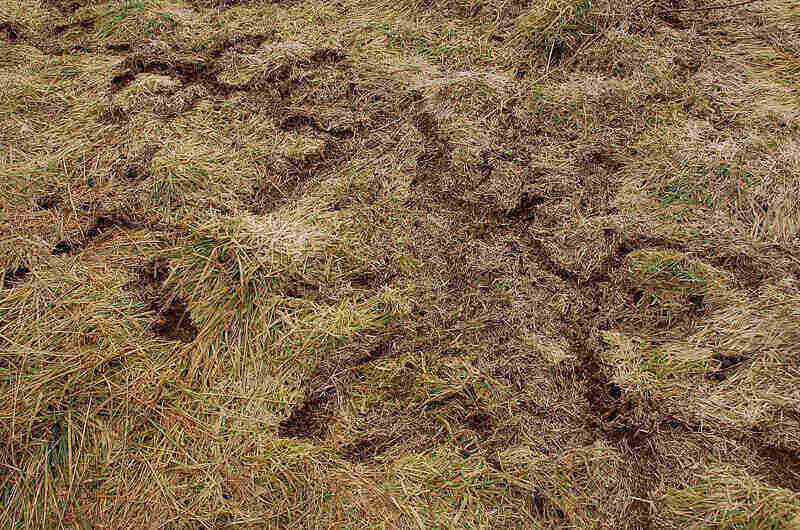
Photo Credit: Jim Barton / Wikimedia Commons / CC BY-SA 2.0
The best way to control vole lawn damage is to make sure they never set up shop on your lawn in the first place. Most problems in home lawns can be mitigated with a mix of habitat changes like fencing or exclusion, trapping, and repellents.
Pro Tip: One “excellent avenue of free vole control,” says the UMass extension office, is an open winter without snow. Vole activity on exposed lawn areas is greatly reduced without the relative protection of snow cover.
1. Spray With Vole Repellents

Repellents mark your yard as a no-go zone when voles go sniffing around for a new home. This can be everything from manufactured repellent chemicals such as the fungicide thiram, or more organic options like capsaicin, the ingredient that makes spicy foods spicy, says Penn State Extension.
But the Extension warns that these shouldn’t be your only tactic in controlling a vole problem. To prevent the voles from forming a feeding pattern, apply repellents before the damage becomes significant, or before it occurs at all.
Apply the repellents around trees or shrubs you hope to keep free of voles, but make sure not to apply them to any portion of a plant that may be consumed by a person or pet. Animals quickly habituate to bad smells or tastes, so mix it up every six weeks or so to keep repellents more effective.
2. Invest in Habitat Modification
There are several ways to keep the little varmints out, especially by closing down the buffet table. You don’t want to get rid of the lawn, but other grassy plants can go.
- Trim up tall grass and weeds around young trees.
- Move or remove bird feeders. They may give the voles a free lunch.
- Limit grass. The grass is the voles’ preferred habitat, and if you can get creative with your landscape, you can remove the grass. Voles, ever fearful of predators, are less likely to cross a weed-free area at least 15 feet wide. “Do you need to have lawn or grass there?” asks Sanchez.
- Mow close in the fall before the snow arrives. A shorter cut reduces the lawn’s attraction for voles. The UMass Extension recommends mowing extra close in the last mow of the season.
- Move wood or brush piles, compost piles, mulch, and other ground covers well away from the lawn. Bird feeders and wood or brush piles plus a lush lawn ”would be a really rich area for a vole to discover,” says Sanchez.
3. Install Physical Barriers
The next step is exclusion: installing physical barriers to keep voles out and prevent vole holes.
You may have seen big plastic pipes at the base of trees or shrubs in your neighborhood. This, as well as tree wrap, hardware cloth, or other wire mesh, will protect from vole damage in your yard.
To protect an individual shrub or tree:
- Cut a section of pipe or form a plastic cylinder and make sure there are no gaps. The cylinder should be 18 inches higher than the maximum snow depth in winter.
- Make it tight to the ground or slightly bury it.
- Cover the tops of the tubes to keep them from trapping small birds.
A mesh fence can protect your prize flower beds, gardens, or other sensitive areas. For very small garden beds or other areas, Sanchez says, exclusion like this can be effective to keep voles from burrowing into them.
For best results:
- Use a quarter-inch or smaller mesh.
- Bury the bottom of the fence two to three inches beneath the surface.
- Make sure the fence extends about a foot above the ground.
How to Repair Vole Damage in the Lawn
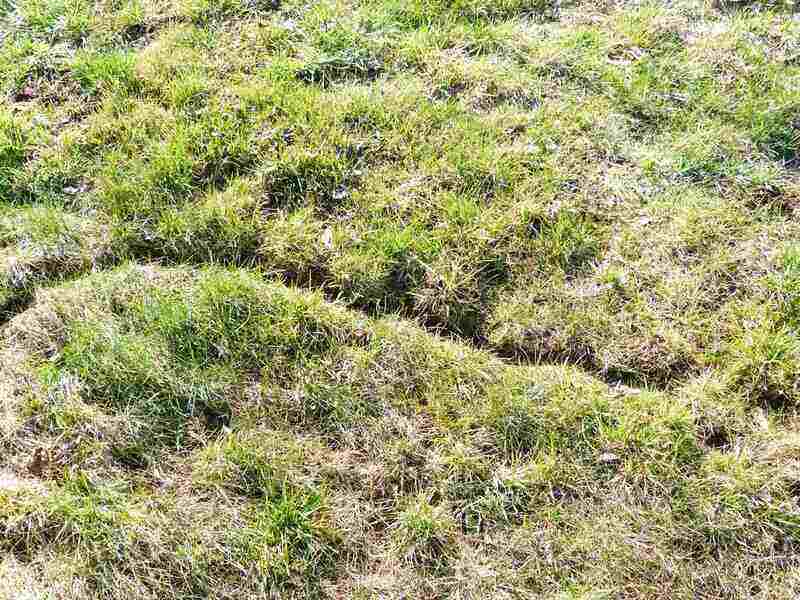
If voles have cut runways through your yard or maybe tunneled under your turf, don’t worry. The University of Nebraska Institute of Agriculture and Natural Resources says that vole holes in the yard usually repair themselves when spring growth ramps back up; they are not permanent.
If you’ve dealt with them before, you know how bad voles are for your yard. But the damage from voles is costliest when it occurs on woody plants. Girdling caused by gnawing voles can severely damage or kill desirable young trees and shrubs.
To give your lawn a kickstart in early spring, though, Colorado State has some tips on smoothing out the affected areas. Follow these three simple steps:
The vole’s holes and runways should disappear beneath green turf in no time.
Voles and Their Characteristics
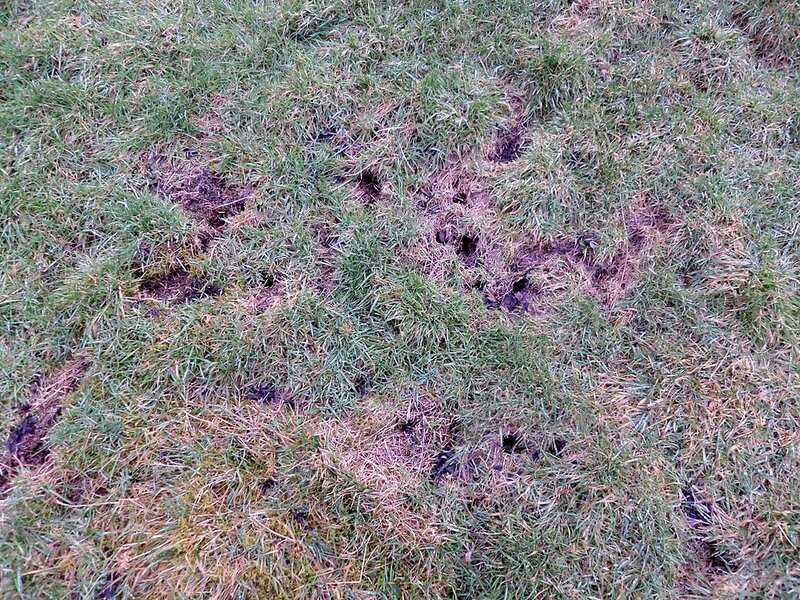
Many types of small rodents may inhabit your lawn. How can you identify whether that furry friend is a vole or another member of the rodent family?
What do Voles Look Like?
Many types of small rodents may inhabit your lawn. How can you identify whether that furry fiend is a vole or another member of the rodent family?
Not to be confused with carnivorous moles, the Penn State University Extension describes the herbivorous voles as “small, chunky, ground-dwelling rodents.”
When mature, voles measure 5 to 7 inches with stocky bodies, short legs, and short tails. While young voles are uniformly gray, adults are chestnut brown mixed with black, but their underparts are dark gray.
They have small eyes, and their ears are furred and don’t project much. (The scientific name of the North American genus of mole, Microtus, refers to their small ears.)
Where do Voles Live?
Different species of voles are spread far and wide. Colorado alone hosts eight species of voles, which are often called meadow mice or field mice, the Colorado State University Extension notes. Regardless of their names, voles do lunch on home lawns, causing vast areas of damage.
Prairie voles, meadow voles, montane voles, and sagebrush voles are among those that make their homes there, and other species are spread across the country from Alabama to Oregon.
In Oregon’s Willamette Valley, there’s even an endemic vole species, the gray-tailed vole, that evolved there, says Sanchez. It’s a strong habitat for voles, which gives area homeowners plenty of headaches.
What do Voles Eat?
Voles are herbivores that munch on bulbs, tubers, and herbaceous plants. But do voles eat grass? Yes, voles eat a variety of grasses, and they’ll also eat tree bark or attack their root system when their food supply is low.
FAQ About Voles in The Yard
Will Voles Return to My Lawn?
Yes. Unfortunately, lawns are a voles’ habitat, so as long as you keep growing grass, you’ll keep attracting voles.
“It’s a matter of people recognizing the signs of voles if not seeing voles themselves,” Sanchez says. The decision is whether to exclude the voles and how to do it. Continue to monitor the yard, she says, walking around the perimeter to look for signs of voles.
“It’s likely that the area will be rediscovered by more animals, so there is no one-and-done solution to simply eliminating the animals,” Sanchez says.
Is it Worth it to Get Rid of Voles?
Getting rid of voles is worth the try, especially if it’s a small population and they are causing damage to your lawn or woody plants. However, the best method is to prevent damage by using physical barriers or modifying their habitat.
If you’re dealing with a large infestation of voles, trapping and baiting can be labor-intensive and often futile for such large populations, says the University of Massachusetts Extension. Couple that with the normally short-lived damage that voles cause to turf, and such methods are rarely recommended for residential lawns.
Are Voles Mice?
No, voles are a member of the genus Microtus, while mice belong to other genera (plural of genus). Even though mice and voles closely resemble each other, the good news is that control methods for both are almost identical. Modify their habitat, build physical barriers, trap them, or use chemical baits to keep populations under control in your lawn.
How Do I Know the Voles Are Gone?
If you see mold or vegetation springing up in runways or vole holes in your yard, that’s good news. It means the critters have moved on. The vole tunnels — small, 1-2-inch — should be visible after that first mow. They can be completely free of grass, or look like miniature grassy ditches.
When To Call a Professional
If you have a large vole infestation or you just don’t want to mess with the DIY treatments, contact your local pest control service to send those voles running.
Main Image Credit: Tomi Tapio / Flickr / CC BY 2.0

